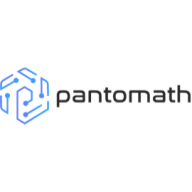

Datadog and Pantomath are competing products in the monitoring and analytics category. Datadog appears to have the upper hand with its comprehensive feature set and extensive integrations, which make it suitable for technical environments.
Features:Datadog is well-known for its advanced monitoring features, real-time dashboards, and extensive integrations. It offers a broad array of tools catering to complex technical environments. Pantomath focuses on providing a streamlined experience with its intuitive design, insightful analytics, and easy data interpretation, appealing to those seeking simplicity and precision.
Ease of Deployment and Customer Service:Datadog is praised for its straightforward deployment process and rich documentation, facilitating user integration. It provides extensive support materials for users. Pantomath offers a quick implementation process and personalized customer support, which is highly valued by its users, enhancing their experience.
Pricing and ROI:Datadog's pricing model reflects its extensive portfolio of features and services, which might justify a higher initial cost but add significant value. Pantomath presents a competitive pricing structure offering a solid return on investment with effective analytics capabilities, making it an attractive alternative for budget-conscious clients.
| Product | Market Share (%) |
|---|---|
| Datadog | 7.4% |
| Pantomath | 0.2% |
| Other | 92.4% |

| Company Size | Count |
|---|---|
| Small Business | 78 |
| Midsize Enterprise | 42 |
| Large Enterprise | 82 |
Datadog integrates extensive monitoring solutions with features like customizable dashboards and real-time alerting, supporting efficient system management. Its seamless integration capabilities with tools like AWS and Slack make it a critical part of cloud infrastructure monitoring.
Datadog offers centralized logging and monitoring, making troubleshooting fast and efficient. It facilitates performance tracking in cloud environments such as AWS and Azure, utilizing tools like EC2 and APM for service management. Custom metrics and alerts improve the ability to respond to issues swiftly, while real-time tools enhance system responsiveness. However, users express the need for improved query performance, a more intuitive UI, and increased integration capabilities. Concerns about the pricing model's complexity have led to calls for greater transparency and control, and additional advanced customization options are sought. Datadog's implementation requires attention to these aspects, with enhanced documentation and onboarding recommended to reduce the learning curve.
What are Datadog's Key Features?In industries like finance and technology, Datadog is implemented for its monitoring capabilities across cloud architectures. Its ability to aggregate logs and provide a unified view enhances reliability in environments demanding high performance. By leveraging real-time insights and integration with platforms like AWS and Azure, organizations in these sectors efficiently manage their cloud infrastructures, ensuring optimal performance and proactive issue resolution.
Pantomath provides efficient data analysis and business intelligence, handling large datasets to generate actionable insights with advanced analytics.
Pantomath serves as a robust platform for data analysis and business intelligence. It handles large datasets efficiently, providing actionable insights through advanced analytics features. It supports decision-making by offering detailed visual reports and real-time data monitoring. Its intuitive design facilitates easy integration with existing systems and simplifies complex data tasks, leading to improved productivity and strategic planning.
What are Pantomath's most important features?
What benefits or ROI should users look for in reviews?
Pantomath finds applications in various industries by adapting to specific requirements. For example, in finance, it enables real-time financial monitoring and forecasting. In healthcare, it helps analyze patient data to improve treatment plans. Manufacturing industries use it for optimizing production processes and supply chain management.
We monitor all Application Performance Monitoring (APM) and Observability reviews to prevent fraudulent reviews and keep review quality high. We do not post reviews by company employees or direct competitors. We validate each review for authenticity via cross-reference with LinkedIn, and personal follow-up with the reviewer when necessary.